The Challenge - Very long pipe lengths to inspect due to long subsea pipelines
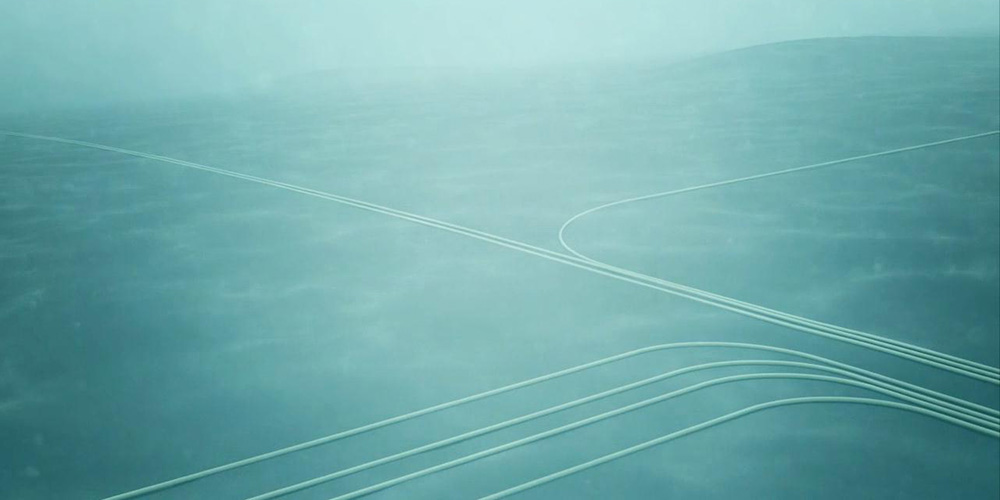
The structural integrity of subsea pipes must be maintained and periodically verified to be operating in a safe and efficient condition. Pipe defects such as corrosion and erosion, are common occurrences which threatens the health of these pipelines.
The default inspection for long subsea lines is pigging. However, Pigging is operationally risky especially when pipe conditions are unknown. In some cases, the cost and disruption incurred by pigging are not justified, even though one or two areas have been identified to have minor defects. Furthermore, many lines are unpiggable.
Conventional non-destructive testing (NDT) methods such as visual, ultrasonic testing (UT) and eddy currents could be used to detect and size these defects. However, if the defect location is unknown, then the challenge lies in the kilometres of subsea line which needs to be inspected.
The Solution - Maximise inspection coverage per test location with guided wave testing
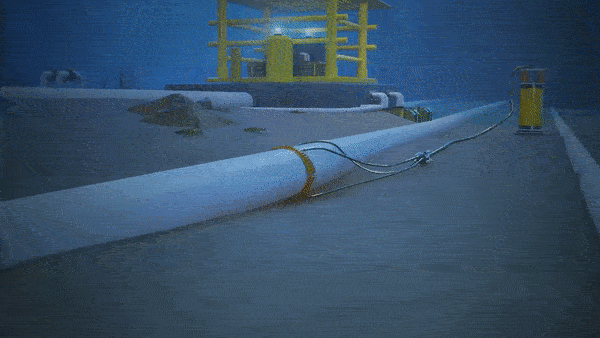
Guided wave testing (GWT) using GUL Subsea technology can be used to optimise the speed of pipeline inspection by screening long lengths of pipes from a single test location.
Most importantly, subsea GWT offers a solution for unpiggable lines (of which there are many), or lines where pigging is considered to be either too disruptive or risky due to unknown conditions.
Guided wave uses low frequency ultrasound that is guided by the pipe structure and propagates away from the test location. This propagating wave will interact and be reflected from both existing pipe features and defects. Inspection information is obtained after the reflected guided wave signals are measured and analysed by a trained and qualified inspector.
GUL offers both diver-deployed (0 to 200 meters below sea level) and ROV (up to 3000 meters below sea level) solutions.
In addition, GUL Subsea also offers Monitoring capabilities using the gMAT.
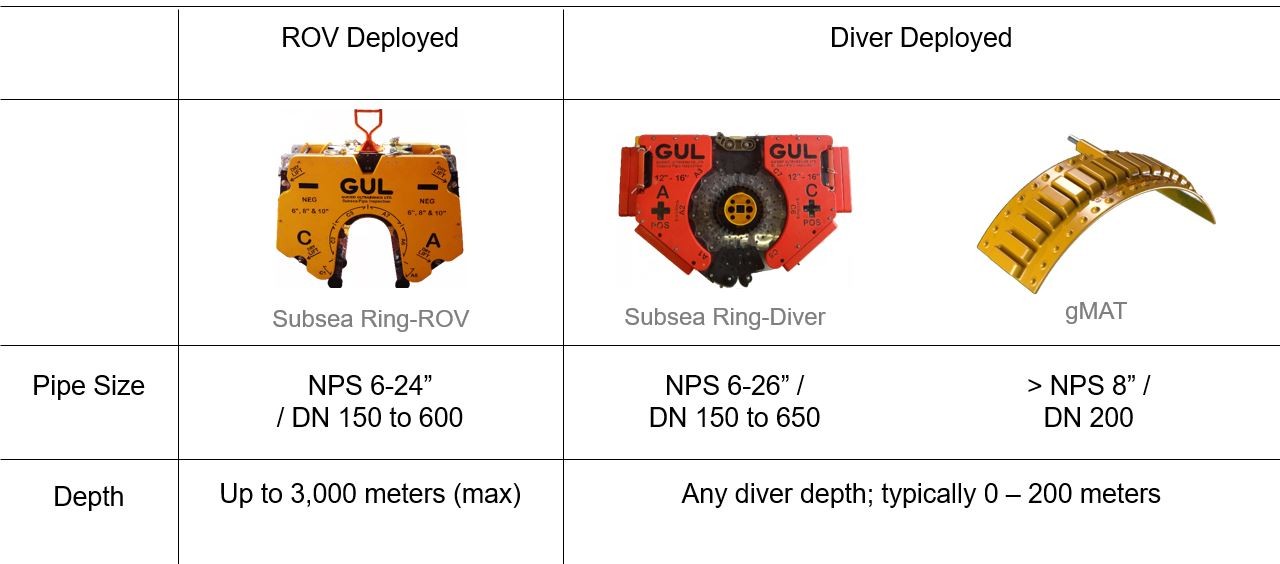
Example - West African subsea pipeline inspection
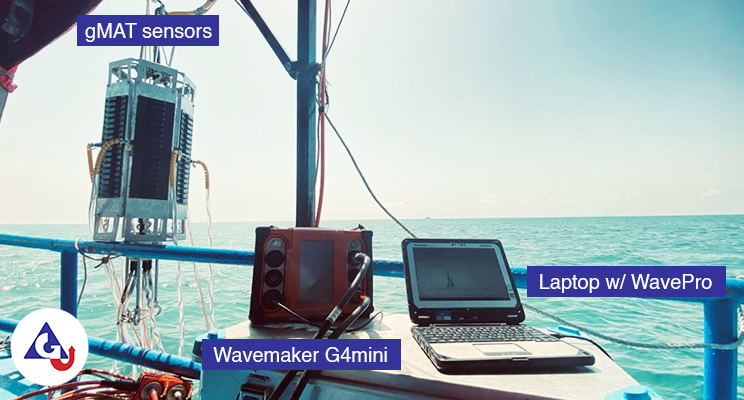
A great application for GUL Subsea is for the inspection of shallow water subsea concrete coated pipeline. In this example, we share details of subsea pipe inspection work done by our clients in West Africa.
Due to the inaccessibility challenge posed by the concrete coated pipe, guided wave testing (GWT) using GUL Subsea technology was selected; alternative method being limited on involving highly disruptive removal of concrete coating.
The diver-deployed, gMAT sensor ring was deemed to be the most suitable tool for this job, and was used to screen the concrete coated pipes.
The gMAT was applied to a small section of exposed pipe using local divers under the instructions of a GULT qualified specialist working to agreed procedures. The key advantage for this product is its cost effectiveness due to its lightweight, easy-to-use and fast-to-deploy sensors for rapid inspection of pipes.
The video below shows how the gMAT was installed on an NPS 18 pipe by our client (NDT service provider). A summarised methodology is listed below:
- Once a test location has been identified, remove at least 200 mm of any existing pipe wraps at this location.
- The pipe surface must be cleaned using either a hand or power tool until it is relatively smooth and free of large debris.
- The gMAT sensors are lowered down from the vessel. The inspector can then magnetically attach the sensors around the pipes by parts.
- Once the sensor is aligned and secured, guided wave data measurements can be collected using the Wavemaker G4mini and laptop with the WavePro software installed.
- Once data has been collected and the data quality checked, the gMAT sensors can be removed and pipe wraps can be reinstalled.
The Results - Guided wave A-scan and Unrolled Pipe Display for detection and location of defect(s)
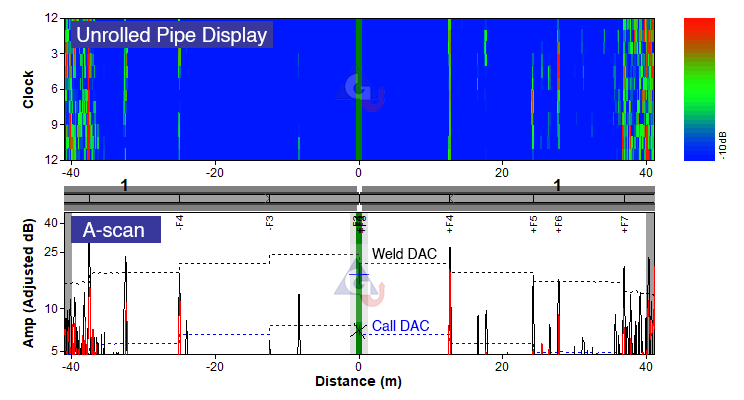
The figure above shows the actual guided wave result obtained from one test location on the client's pipeline. The result was processed and analysed by a trained and qualified Level 2 guided wave inspector.
GUL Subsea is based on both GUL Screening and GUL Monitoring technologies, but applied towards subsea pipelines. Therefore, the A-scan and Unrolled Pipe Display can be obtained when performing screening operation using GUL Subsea tools.
A-scan
The GUL A-scan shows a graph of reflected guided wave amplitudes against pipe distance; zero meters indicates the position of the attached gMAT test location. The dashed lines are known as the distance amplitude correction (DAC) curves, which have been calibrated to allow us to compare the reflection amplitude to the actual cross-sectional area change (CSC) of the inspected pipe.
In general, the signal peaks in the plot that we see, are caused by guided wave reflections from:
- Existing pipe features within the pipe (e.g. welds, supports, flange, bends)
- Defects (e.g. corrosion, erosion)
Typically, an indication or potential defect, is called by an inspector if there is a signal which exceeds the Call DAC (i.e. higher than the blue dashed line) and is localised (the ratio of black to red signals analysed).
The A-scan also shows that the inspection range in this test is approximately 40 meters (131 feet) in both directions of the sensor, or a total of 80 meters (262 feet) .
Unrolled Pipe Display
The Unrolled Pipe Display is a reflection amplitude colour map that plots the circumferential position against pipe distance. The information from this plot gives information about the distribution of the reflected guided wave energy at the circumferential position of any defects and existing pipe features.
This helps inspectors to:
- Distinguish between defect and existing pipe feature
- Detect the circumferential position of a defect
- Estimate the defect depth based on the distribution of material loss
Inspection Outcome
The client was extremely satisfied with the outcome which confirmed that:
- there was no corrosion above allowance reporting threshold;
- the condition of the pipe (internal and external surfaces) was fit for purpose;
- pipe attachments such as CP anodes identified and located;
- wall thickness measurements over 360 degrees at the gMAT position measured the pipe thickness at 6 different circumferential locations. This confirms that the pipe was still close to nominal wall thickness with no variation around the pipe circumference. Hence, ruling out any top of the line corrosion or bottom of the line corrosion.
Also Read, Fundamentals of NDT for Subsea and Off-shore
Conclusion
Subsea pipelines are typically in the order of kilometres, with many shorter unpiggable lengths, that should be inspected periodically in order to be confident of their structural integrity. Guided wave screening offers a fast way of assessing pipe condition without the need for disruption to production and because it is non-obtrusive can be done without risk of becoming stuck in the line. Good screening data may allow delaying the interval between pigs runs offering substantial savings both on inspection cost and lost production.
GUL Subsea provides solutions based on guided wave tech, that will help NDT service providers to reliably inspect tens of meters of pipe from a single test location. The solution offers a superior inspection area coverage per test location and can be used to detect location of pipe defects caused by corrosion, erosion or external damage; especially in difficult to inspect areas, such as under concrete weight coat or concrete mattresses or sand/grout bags.
GUL Subsea offers a wide range of diver and ROV deployed solutions, with a strong track record and based on our 21 years of experience in guided wave inspection. Aside from reliable hardware and superior data processing software, audited procedures and GULT training are both important aspects to the success of this inspection work.
For unpiggable lines, GUL Subsea can provide the required integrity information, with which continued safe operation, can be continued in confidence. For piggable lines, the information can be used to supplement pigging data and possibly extend the intervals between pig runs; potentially serving as a cost-effective solution.
For more information, leave a comment or send us an email at info@guided-ultrasonics.com
About GUL and GUL Subsea
GUL (Guided Ultrasonics Ltd.) is an R&D and equipment manufacturing company with headquarters in London, United Kingdom. We provide equipment and consultancy services to NDT service providers. We do not provide periodic-based inspection services directly to pipeline owners.
GUL Subsea is the product line specifically designed for subsea pipe inspection applications. The photo below gives an overview of GUL's main product lines.
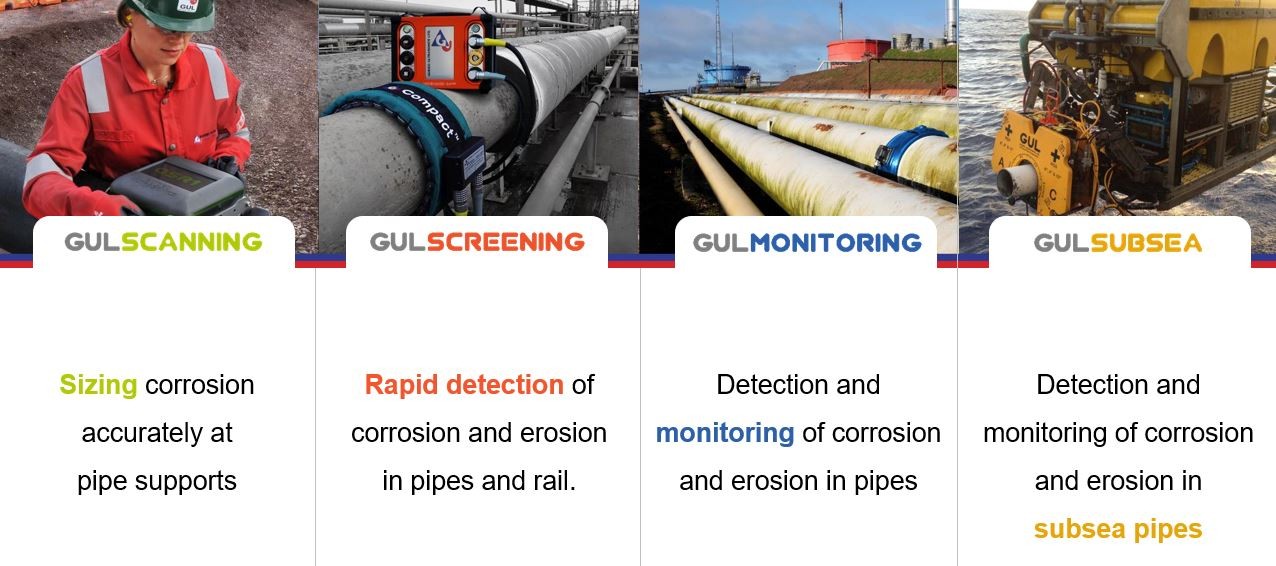
Be sure to follow us on LinkedIn for the latest updates on guided wave news and technology.
Source: https://www.linkedin.com/pulse/how-inspect-subsea-pipes-using-gul-guided-ultrasonics/










